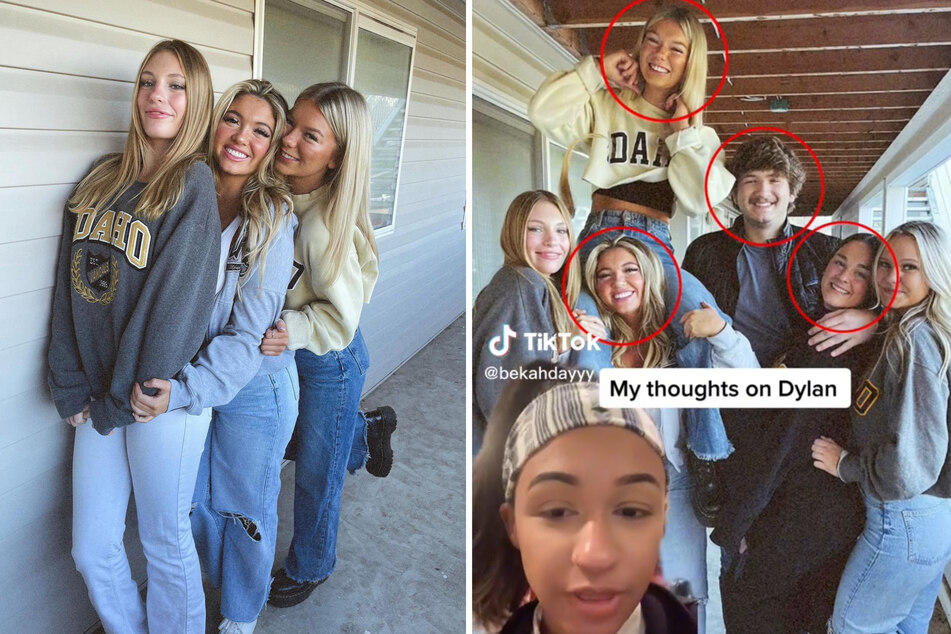Moscow murders: True crime TikTok gets blasted for unsettling roommate theories
Moscow, Idaho - True crime creators on TikTok are continuing to spread unfounded theories about the surviving roommates in the Moscow murders case following the release of the probable cause affidavit.

When the story first broke, many were confused by the case's timeline, as a 9-1-1 call was not placed until noon, about eight hours after the murders took place.
The call was confirmed to have come from one of the surviving roommates' cell phones, and it was to report an "unconscious person."
The case soon went viral on TikTok, and far too many true crime-focused creators looking to crack the case were more than happy to accuse those close to the victims of the crime – despite having already been ruled out by law enforcement.
Bethany Funke and Dylan Mortensen, the two surviving roommates who were home the night of the killings, have been repeatedly targeted by cruel social media theorists.
Many pointed to the roommates in particular due to the lapse in time between the murders and the 9-1-1 call, but both were cleared by police early in the investigation.
On December 30, the case finally reached a break when 28-year-old Bryan Kohberger was arrested for the murders, and many social media users expressed relief that the unfounded theories about those close to the victims would finally end.
Unfortunately, it seems these internet sleuths haven't learned their lesson.
TikTok users cruelly blame surviving roommates for their response to the murders after affidavit

The probable cause affidavit released on Thursday revealed new details about what the surviving roommates saw and heard that night.
The court document confirmed that Mortensen, identified as "D.M.," peeked out of her bedroom door when she heard noises upstairs and saw the killer.
She then locked herself in her room and was frozen in fear, and the details from the affidavit ended there.
This information reignited content creators' criticism of the roommate's behavior.
"Something about the roommates in the Idaho murders listening to what was going on and SEEING him leave yet not calling the police until noon the next day doesn't sit right w me," one user tweeted.
TikTok theorists also ran wild with questions as to why she didn't call 9-1-1 sooner and how she could have slept through the killings.
All of this continues to show that far too many true crime fanatics are missing a key element here: empathy.
Social media response to Moscow murders continues to show insensitivity tied to true crime culture

Thankfully, many creators have come out to defend the roommates with videos emphasizing the vital need to show empathy to these young girls.
While their defenses are important, they shouldn't be as needed as they are.
Maybe she was drunk, maybe she fainted, and so on and so forth. There are a million possible explanations for Mortensen's behavior.
But above all else, this was a traumatic event. The impact of this entire situation is unimaginable, and it's absurd to believe that any of us can rightfully claim we would've handled it any better.
Sure, there are elements of this case that don't quite make perfect sense. But this is real life, not a game of Clue or a fictional crime show.
Law enforcement has been intentionally selective with what information is shared with the public to preserve the case and crucial aspects remain private to preserve the integrity of the case before it heads to trial.
While the popularity of true crime media may have made us all upsettingly comfortable speculating on real-life cases, doing so in a public forum and making direct accusations against individuals who have been traumatized by this crime is unacceptable.
Maybe Mortensen's behavior "doesn't sit right with you" in this case. But if that's more concerning than the lengthy evidence against the suspect, you may have some reflecting to do.
Cover photo: Collage: Screenshot/Instagram/@kayleegoncalves, Screenshot/TikTok/@bekahdayyy

